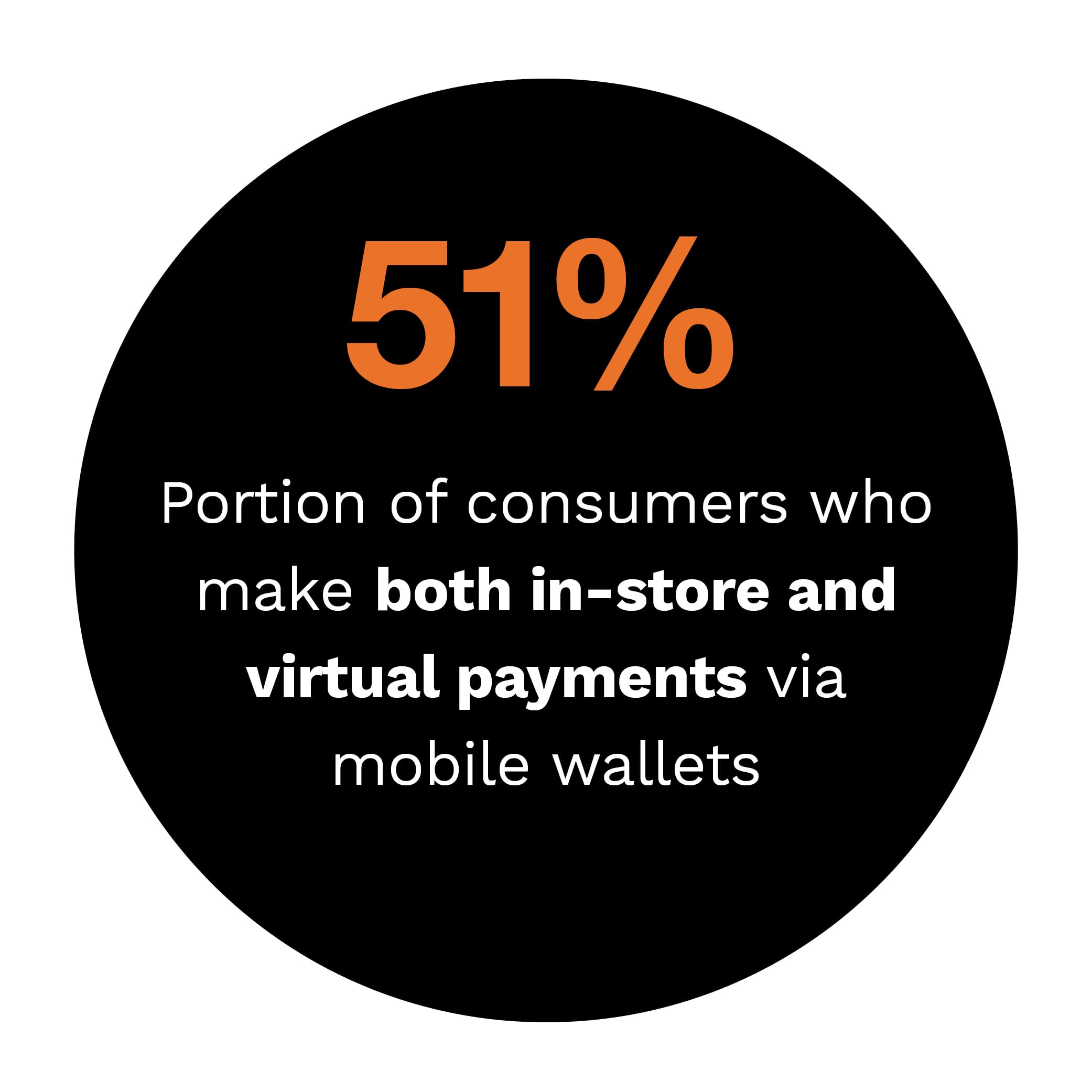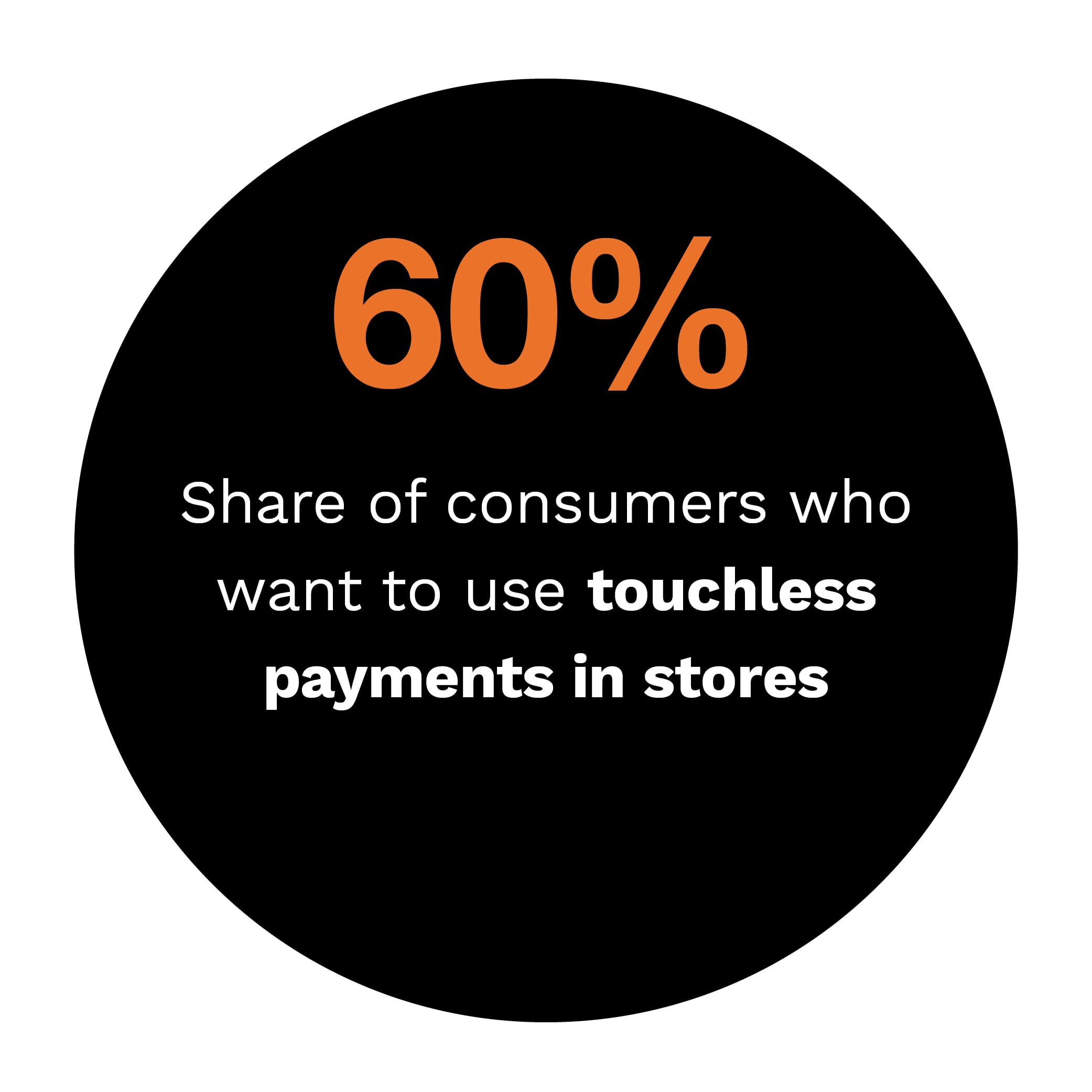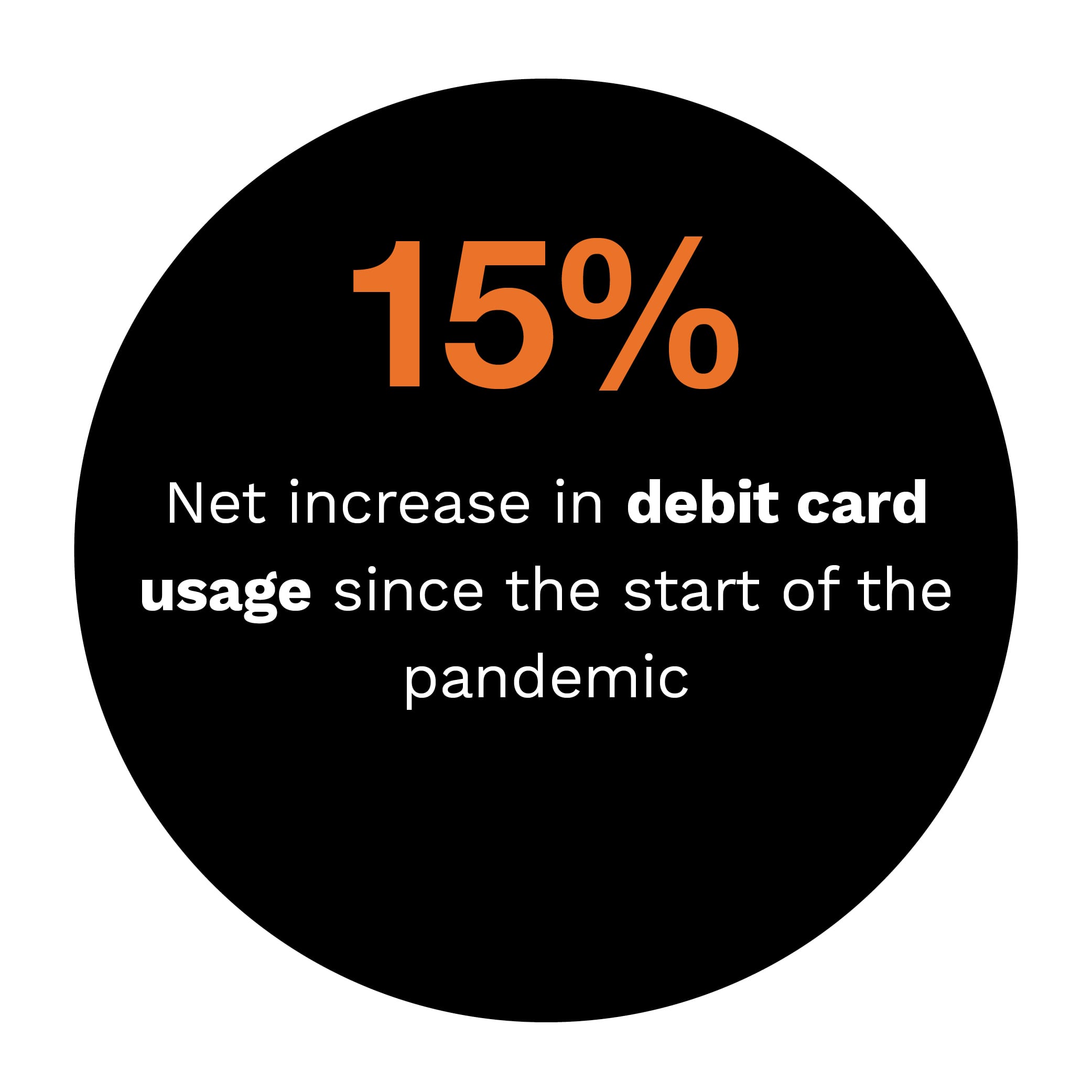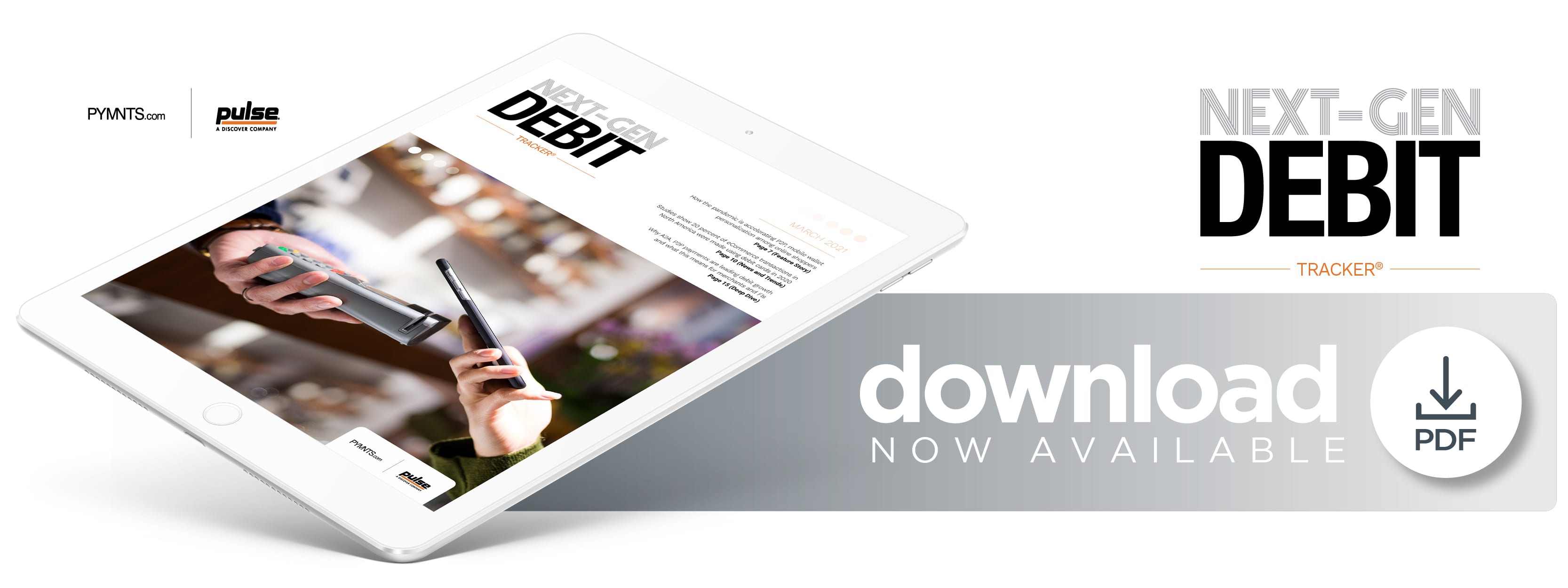Retailers Tap Debit-Linked Mobile Wallets To Keep Consumers Engaged

Consumers continue to tap online channels more often to make retail transactions, interact with their financial institutions (FIs) or pay their bills during the pandemic. PYMNTS data shows that they are still using many familiar payment methods even as they shift to digital channels, with U.S. consumers’ debit card use rising 15 percent since the pandemic began.
Account-to-account (A2A) transfers are responsible for a large portion of this increase, with studies revealing that these transfers represent 40 percent of debit’s growth, for example. A2A transfers include payments sent directly from one bank account to another as well as funds moved between peer-to-peer (P2P) payment apps — including bank-owned Zelle and PayPal’s Venmo service — and mobile wallets. These payment solutions have experienced a bump in popularity since the pandemic’s onset, with PYMNTS research also finding that 60 percent of U.S. millennials have used digital wallets to make both digital and brick-and- mortar transactions.
mortar transactions.
In the latest Next-Gen Debit Tracker®, PYMNTS examines why A2A transfers are driving debit growth and the role these payment tools will play in the future. It also focuses on how P2P apps and mobile wallets will factor into this shift.
Around The Next-Gen Debit World
P2P apps, which require consumers to link their debit, credit or bank accounts to transact, are primarily designed to be accessible via mobile phone. These solutions appear to be gaining favor with consumers during the pandemic as they seek emerging payment methods that let them contactlessly access digital and mobile shopping channels. P2P app Zelle reported that it processed 1.2 billion payments in 2020, a 58 percent jump from its 2019 figures, for example, and payments solutions provider PayPal noted a 60 percent year-over-year increase in total payment volume for its Venmo P2P app. This shows that more consumers are growing comfortable with these apps, and that retailers and banks will need to keep track of this shift and roll out P2P solutions that their customers seek to stay competitive.
Mobile wallets’ growing popularity globally is also reducing cash and credit use among consumers, with one study noting that mobile wallets accounted for 10 percent of physical point-of-sale (POS) payments worldwide in 2020 — a 6 percent jump from the year before. Cash payments meanwhile declined 30 percent year over year to account for just 21 percent of in-store sales. The study also found an increase in mobile wallets’ use for eCommerce purchases, especially in North America, where 29 percent of eCommerce sales were made using these payment solutions. It also stated that consumers are likely to continue embracing digital wallets in the future, predicting that such solutions will make up 16 percent of  all physical POS transactions by 2024.
all physical POS transactions by 2024.
Debit use in general is also on the rise. One study found that 71 percent of U.K. consumers prefer to tap debit to make payments, while just 25 percent prefer credit. Part of debit’s appeal is that it can enable consumers to better control their spending, with the report finding that 52 percent of U.K. debit users cite this as the main reason they prefer the method. Avoidance of debt was also a popular deciding factor, with 48 percent of consumers stating that it was the reason they picked debit over other methods when making purchases.
For more on these and other stories, visit the Tracker’s News & Trends.
How The Pandemic Is Driving Debit-Enabled P2P, Mobile Wallet Adoption
Many consumers have become accustomed to using their smartphones to make purchases during the pandemic, and a growing number are tapping mobile wallets to streamline the process. They are still linking these new wallets to familiar payment tools like debit, however, meaning merchants must ensure they are up to speed on offering the mobile wallet options that speak to their brands, Taylor Sicard, co-founder and chief marketing officer for Win Brands Group, said in a PYMNTS interview
To learn more about how the global health crisis is accelerating the adop tion of debit-linked digital wallet use and what this shift means for the future of retail payments, visit the Tracker’s Feature Story.
tion of debit-linked digital wallet use and what this shift means for the future of retail payments, visit the Tracker’s Feature Story.
Deep Dive: The Rise Of Debit-Enabled P2P App And Mobile Wallet Use
More consumers are tapping mobile technologies during the pandemic, leading to increases in the use of tools such as P2P apps and digital wallets as consumers move away from physical tender and plastic cards for both in-person and online purchases. Many are still looking to link these offerings to more traditional payment methods such as debit cards, however, which could have an effect on how they use these technologies in the future.
To learn more about how consumers’ use of P2P apps and mobile wallets is changing, as well as how this could drive debit use in the years ahead, visit the Tracker’s Deep Dive.
About The Tracker
The Next-Gen Debit Tracker®, a collaboration between PYMNTS and PULSE, a Discover company, examines consumers’ changing payment behaviors, the innovations that are reshaping how they use debit, and how advanced solutions like machine learning technologies can help financial institutions secure debit payments.
